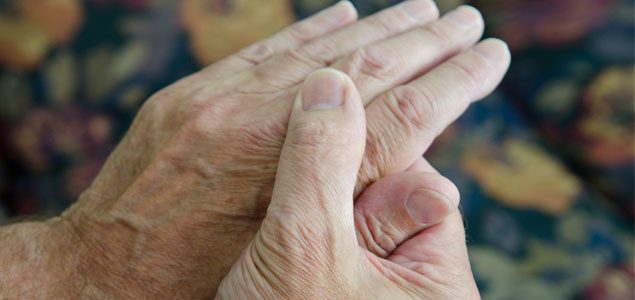Although my 97-year-old grandfather still enjoys a weekly game of golf, his arthritis makes the game less enjoyable than it once was. My 95-year-old grandmother had to give up her favourite pastime, knitting, because her arthritic hands made the task impossible. Even my parents who are in their 60s are having to modify their lifestyle because their joints are starting to give them grief.
Arthritis is a very common condition and it is the major cause of disability and chronic pain in Australia. According to leading researcher Access Economics, current trends suggest that, by 2050, seven million Australians will suffer from some form of arthritis.
While it is commonly considered to be a consequence of age, Arthritis Australia says the condition is not a natural part of ageing, and can affect people of all ages.
Arthritis is an umbrella term for more than 100 medical conditions that affect the musculoskeletal system, specifically joints where bones meets. Arthritis-related problems include pain, stiffness, inflammation, joint weakness, instability and deformities, which can interfere with the most basic daily tasks, such as walking, driving a car, and preparing food.
Early intervention is key
Research suggests that early intervention not only delays the onset of the disease, it may also help you to side step the condition. Although your genes play a large role in whether or not you will develop arthritis, there are things you can do to preserve joint health.
• Limit high heel shoes to special occasions. Heels put extra stress on your knees and feet.
• If your job primarily involves sitting, make sure you stand and stretch every half hour.
• Maintain a healthy weight. If you are overweight, research has shown that losing as little as five kilograms may improve your joint health and cut your risk of osteoarthritis of the knee by 50 per cent.
• Make sure you are getting enough calcium to keep your bones strong.
• Enjoy a fish meal each week. Omega-3 fatty acids, found in cold-water fish such as salmon and mackerel, can help keep your joints healthy.
• Stay active. Range-of-motion exercises (such as stretching) are a good way to keep your muscles and ligaments flexible and strong. Swimming and low impact exercises are easy on your joints and keep you well. Weights are great for improving strength and balance.
• Quit smoking. Research from the UK has shown that cigarette smoking increases the risk of developing arthritis.
Three recent developments in managing arthritis
1. New Treatment
Scientists of the Charité – Universitätsmedizin Berlin have presented a new therapy approach for the treatment of rheumatoid arthritis. The new therapy study was especially directed at patients who showed no adequate response to conventional treatment with tumor-necrosis-factor directed reagents. During the course of a six-month study, 399 patients in 13 countries participated, who were suffering from a moderate to severe form of rheumatoid arthritis. They were all treated with a combination of Methotrexat, a standard drug for the treatment of RA and Tofacitinib, a new type of medication that can be administered orally as a tablet. The study has shown that the combination of Methotrexat and Tofacitinib has a high degree of efficacy in the treatment of RA.
2. Obesity Warning
According to a literature review appearing in the March 2013 issue of the Journal of the American Academy of Orthopaedic Surgeons(JAAOS) obesity may trigger the biomechanical and inflammatory changes that cause osteoarthritis.
3. Knee Brace
Wearing a knee brace has been shown to “significantly improve the pain and symptoms” of a type of osteoarthritis affecting the kneecap, according to a study by Arthritis Research UK-funded researchers at The University of Manchester. The research team conducted a random controlled trial of a lightweight lycra flexible knee brace fitted around the knee with a support strap for the kneecap. After six weeks of brace wearing, there were significant improvements between the brace wearing group in terms of pain, symptoms, knee stiffness, muscle strength and function.




